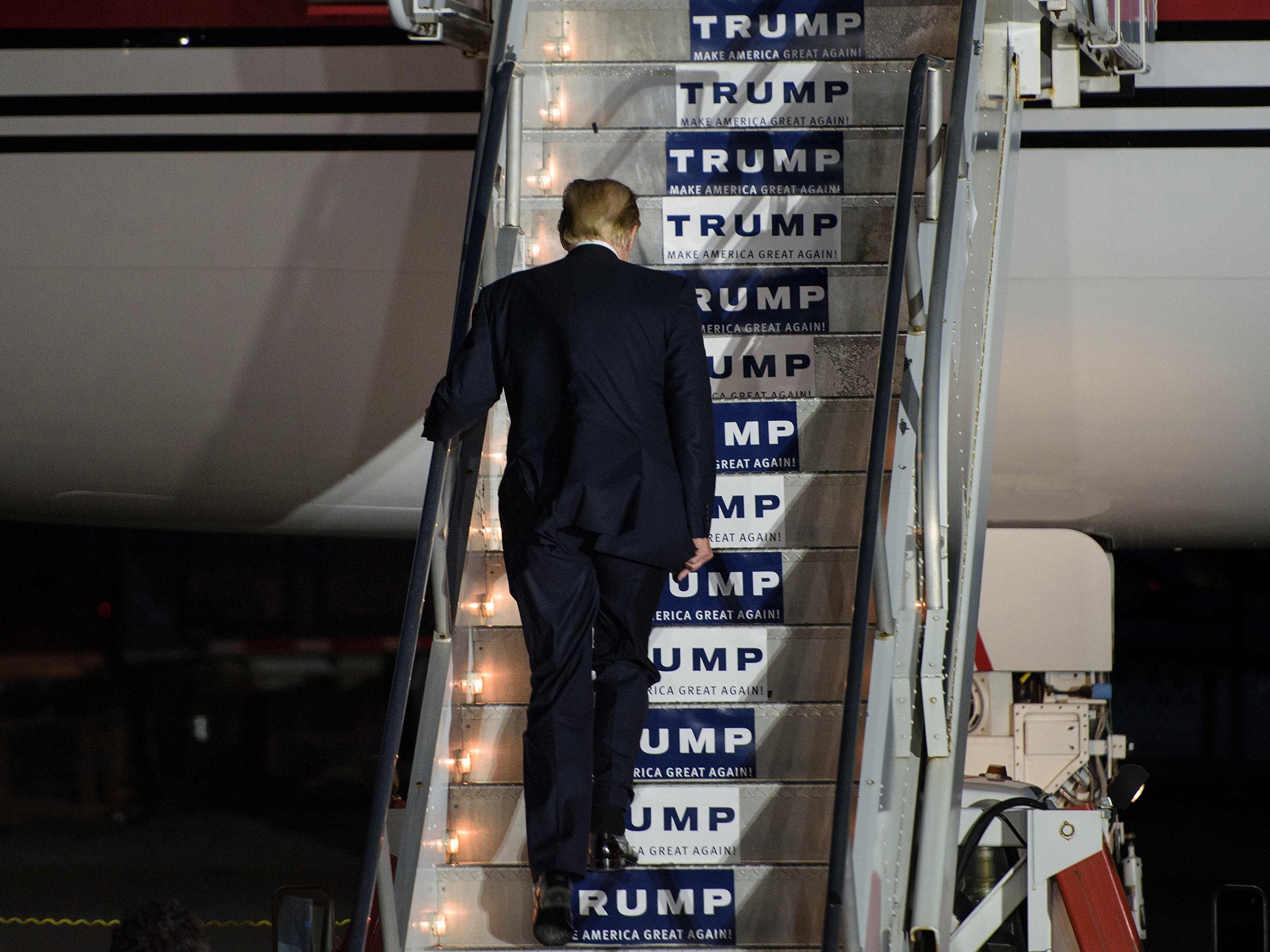US Election 2016: Trump card could secure victory over Clinton in game of demographics
Both likely major party nominees are viewed unfavourably by a majority of the electorate


Your support helps us to tell the story
From reproductive rights to climate change to Big Tech, The Independent is on the ground when the story is developing. Whether it's investigating the financials of Elon Musk's pro-Trump PAC or producing our latest documentary, 'The A Word', which shines a light on the American women fighting for reproductive rights, we know how important it is to parse out the facts from the messaging.
At such a critical moment in US history, we need reporters on the ground. Your donation allows us to keep sending journalists to speak to both sides of the story.
The Independent is trusted by Americans across the entire political spectrum. And unlike many other quality news outlets, we choose not to lock Americans out of our reporting and analysis with paywalls. We believe quality journalism should be available to everyone, paid for by those who can afford it.
Your support makes all the difference.With Hillary Clinton – barring an email-related bombshell from the FBI – now virtually certain to be the Democratic nominee, and Donald Trump heavy favourite to be her Republican opponent in November, both campaigns are now focusing on a vital aspect of the race: how to win the demographics game that decides US presidential elections. And in this remarkable 2016 cycle, some old certainties may no longer hold.
Her wins in Florida, Ohio, North Carolina and Illinois on Tuesday leave no doubt Mrs Clinton is in firm command of the key Democratic constituencies of blacks, Hispanics and women voters. That is likely to remain the case this autumn, if Mr Trump wins his party’s nomination. But she may be vulnerable elsewhere.
Once white working-class voters were a lynchpin of the Democratic coalition. That began to change in 1980 with the emergence of the “Reagan Democrats” – mostly blue-collar white Americans in the old industrial heartland upset by the liberal cultural policies of their traditional party. Since then, Democrats have never been able to win them back entirely. Now Mr Trump is making his own play for them.
The exact cross-over vote this primary season is impossible to quantify. But record turnouts in many Republican primaries this season – and the fact that Mr Trump tends to do better in “open” primaries, where a voter can choose either the Republican or Democratic ballot at the polling station itself – suggest that many white working-class Democrats are buying his argument: that the US is in big trouble, that immigration and free trade are destroying the national fabric, and that ordinary Democrats and Republicans alike have been duped and betrayed by the ruling elites in Washington.
Some analysts reckon five million or more white voters simply didn’t bother to turn out in 2012. Mitt Romney won 59 per cent of those that did; had he boosted that to 63 per cent, all other things being equal, he would have won. That plainly is Mr Trump’s calculation now – that an increase in turnout by whites (who still account for 63 per cent of the voting-age population) will nullify any surge in turnout by Hispanics put off by his tirades against immigrants and threats to build a wall along the southern US border. Hispanics (and Asians) in any case are less assiduous voters than whites and blacks.
In 2012, barely 40 per cent of Hispanics voted, compared to over 60 per cent of whites. With overall turnouts of 59 and 55 per cent in 2008 and 2012 respectively, there is plainly potential to expand the Republican vote, not least among people who have never voted before, but who attend Mr Trump’s giant rallies across the country.
In taking this approach moreover, Mr Trump would be flying in the face of the Republican National Committee’s official post mortem into Mr Romney’s defeat. To counter seemingly inexorable demographic trends, the party must increase its appeal to Hispanics, women and the middle class. In five of the past six presidential elections, the RNC noted, Republicans had lost the popular vote. But time and again, the property tycoon has overturned party orthodoxy. Why not once more?
Against this must be set a huge uncertainty. Some white working-class Democrats undoubtedly will go for Mr Trump. But how many normally Republican voters simply will not vote for him under any circumstances? For perhaps the first time ever, both likely major party nominees are viewed unfavourably by a majority of the electorate. But Mr Trump’s ratings are even worse than those of Ms Clinton – 63 per cent negative, according to Gallup, compared to “only” 53 per cent for Ms Clinton.
Join our commenting forum
Join thought-provoking conversations, follow other Independent readers and see their replies
Comments